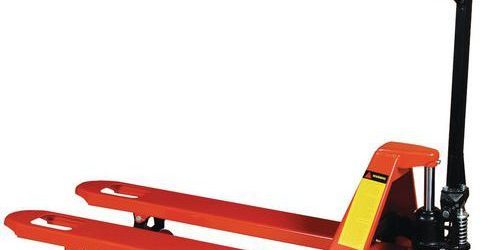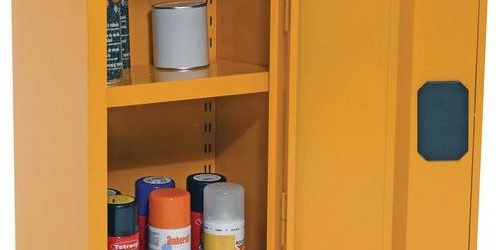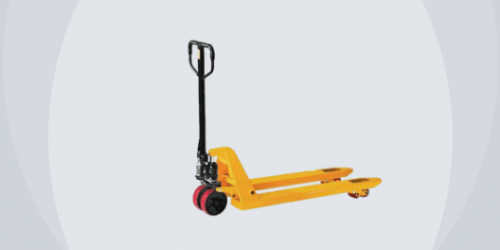10 essential pieces of equipment for an ergonomic workstation
What better time to take care of your teams’ health than now? As the saying goes, “Prevention is better than cure”. Musculoskeletal disorders (MSDs) are responsible for decreased performance and increased absenteeism. Lower these risks by providing ergonomic workstations. What is the ergonomics of a workstation? The conditions of use of certain equipment are what’s ergonomic, not the object itself. Each piece of equipment must adapt to the specific needs of its user. Ergonomic design promotes good posture, reduces tension and improves blood circulation. It helps protect the health of your employees.
Discover the 10 pieces of equipment to equip your offices, workshops or laboratories:
- Ergonomic office chair
- Footrest
- Screen riser
- Document holder
- Ergonomic keyboard
- Vertical mouse
- Sit-stand workstation
- Anti-fatigue mat
- Ergonomic workshop seat
- Saddle seat
1. Ergonomic office chair
Prolonged sitting increases the risk of back pain. Ergonomic office seats ensure optimal working conditions, whether the person is working on site or from home. They are designed to support and adapt to the user’s weight and height while promoting comfortable posture for the body.
Office chairs must be chosen according to activity. For the workstation to meet ergonomic criteria, the seat alone is not enough. It sometimes needs to be complemented by a footrest and a screen riser. All these elements combined make it possible to adopt good positions.
2. Footrest
Another important criterion for an ergonomic workstation: the feet must be flat on the floor. If the desk is not adjustable, it often needs to be equipped with a footrest which can be height-adjustable and tiltable. When installed correctly, it relieves the pressure that can be exerted on the legs and back.
For optimal comfort, there is a wide range of footrests. Some models have anti-fatigue and anti-stress massage areas. These small details matter when it comes to creating pleasant working conditions.
3. Screen riser
One of the basic rules of an ergonomic computer workstation is the screen height. The upper part of the monitor should be at eye level. The screen riser allows it to be adjusted to the user.
Such equipment forces the head to remain upright facing the screen and thus reduces tensions in the cervical vertebrae and shoulders. Visual fatigue is also reduced thanks to an ideal angle of vision for the eyes to converge and adapt.
4. Document holder
A document holder is essential for an ergonomic office workstation. Entering data while consulting a document creates muscle tension and fosters recurring bad posture. A document holder placed in the space between the keyboard and computer reduces the strain on the eyes and neck.
These accessories are not bulky. Basic versions can be made from recyclable and recycled materials. You can thus make your employees’ work easier while opting for a range of eco-responsible products.
5. Ergonomic keyboard
The ergonomic computer workstation can be complemented with a suitable keyboard. An ergonomic keyboard does not have a numeric keypad, shortening the distance between the right hand and the mouse. By reducing the range of motion, you avoid the development of MSDs.
For accounting work, an external numeric keypad can be installed as required. Some keyboards are curved to encourage the most comfortable wrist position possible. Two-part split keyboards allow the forearms to relax.
6. Vertical mouse
A classic mouse causes pressure on the veins and nerves below the wrist. This results in pathologies such as carpal tunnel syndrome or tendinitis. A vertical mouse is highly recommended to limit these risks. It is designed to ensure an ergonomic computer workstation. Its design follows the natural inclination of the hand, thereby reducing areas of tension.
It may take a few weeks to adapt to this new mouse. It is advisable to alternate with the old mouse initially. For optimal comfort, it should match the size of the user’s hand. There are even ambidextrous models.
7. Sit-stand workstation
Sitting or standing for an extended period of time has health implications. That’s why an ergonomic sit-stand workstation in the office, reception areas or workshop is an ideal piece of equipment. Alternating between sitting and standing lowers the risk of back pain and circulatory disorders.
Workbenches, meeting tables or desks all come in a height-adjustable ergonomic version. Whether manual or electric, the models allow a quick change of working position.
8. Anti-fatigue mat
For an ergonomic workstation in an industrial environment, as in a laboratory, an anti-fatigue mat is a must. Prolonged standing results in poor blood circulation and varicose veins. There is also an increased risk of inflammation of the plantar fascias as well as the lower back.
An anti-fatigue mat promotes micro-movements of the feet and helps distribute weight evenly. Standing is stressful for the body. That’s why it’s important to complement workshop equipment with tables and sit-stand chairs that facilitate a change of working position.
9. Ergonomic workshop seat
Workstation ergonomics in a workshop or laboratory require suitable seats. Poor postures are adopted so quickly that practical and comfortable seats are needed to reduce the risk of MSDs.
A workshop seat is both stable and flexible. It thus enables precision work while fostering freedom of movement. Its adjustable height adapts to both the worktop and the user.
10. Saddle seat
The saddle seat was designed to reduce health problems caused by sitting. It corrects the position of the pelvis in order to maintain the physiological curve of the back. The positioning of the legs forms an angle designed to promote blood circulation in the lower limbs.
It adapts to movements and not vice versa. Leaning forward or sideways then becomes much less restrictive for the body. This ergonomic seat is particularly recommended for laboratories. You can also use it in the office to maintain an ideal work posture. After a period of adjustment, the benefits will be felt very quickly.
The design of an ergonomic workstation takes into account the specific needs of each individual. Moreover, PRM (people with reduced mobility) equipment creates a work environment that is both ergonomic and adapted to people with disabilities. Make workplace well-being a performance lever for your business.






